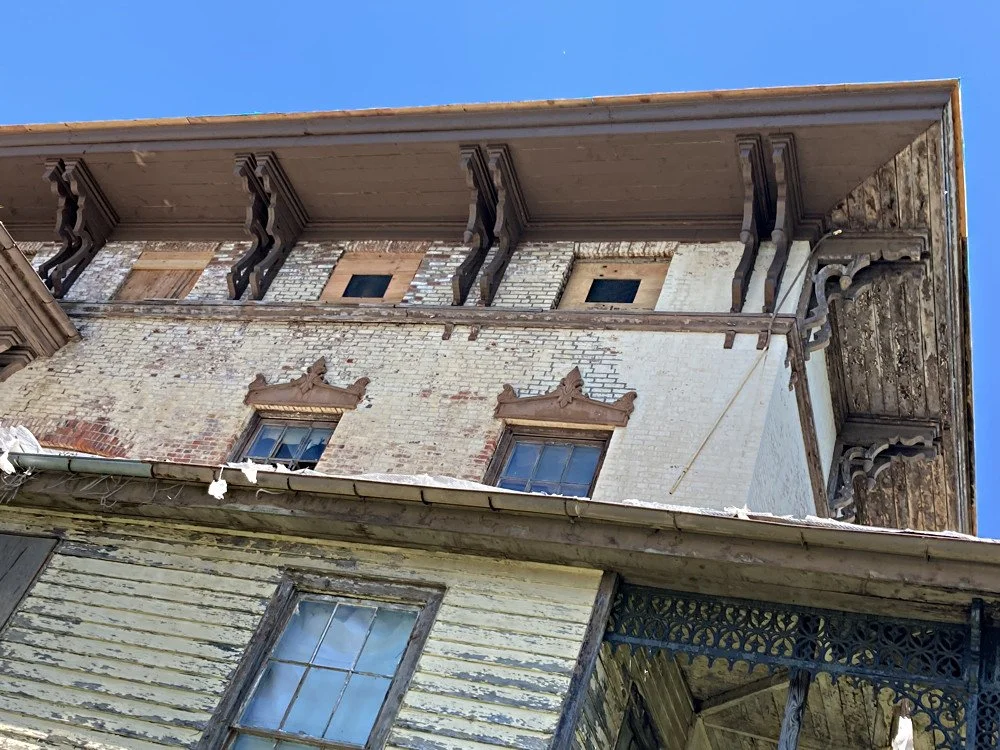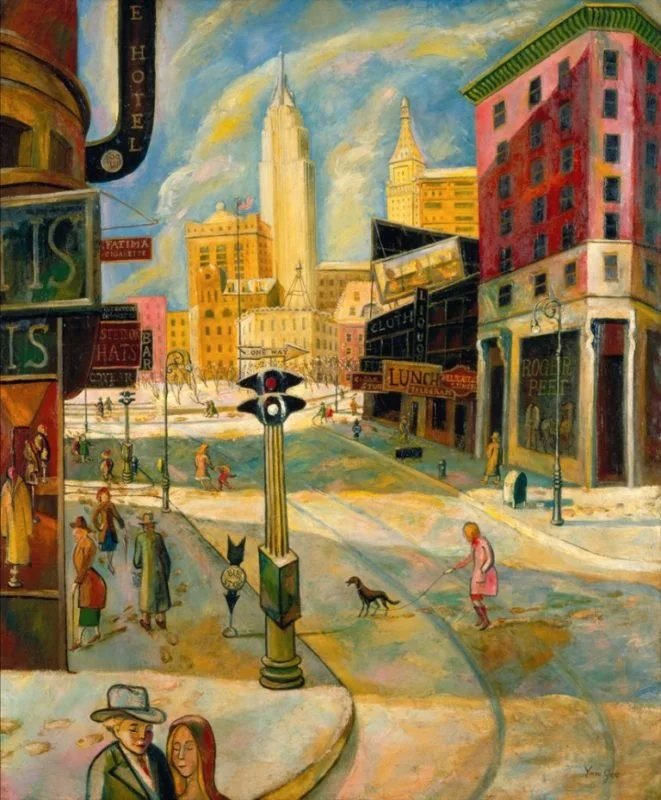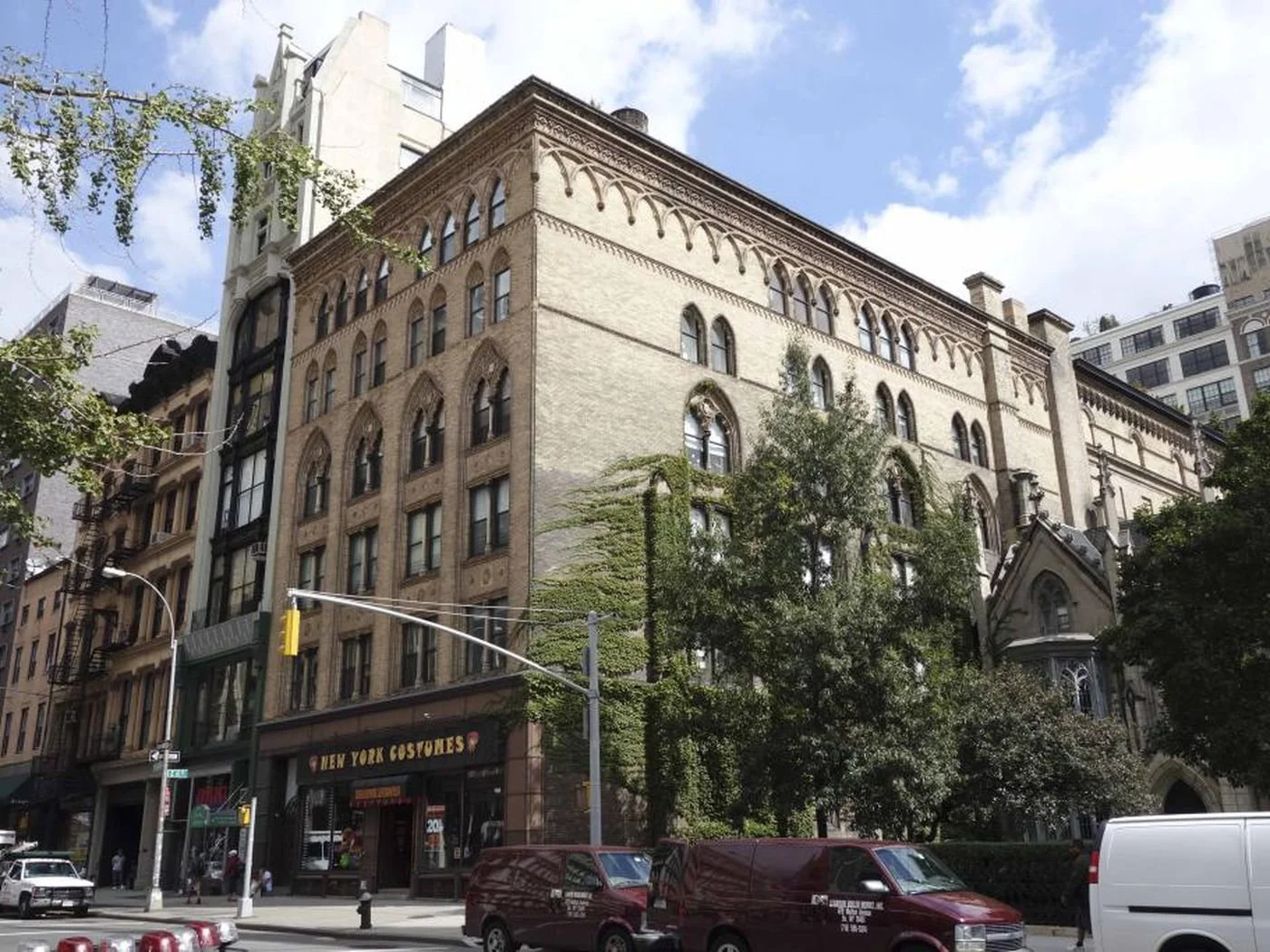Since including Opera Houses on the 2018-19 Seven to Save list, the League has worked to document and develop strategies for the preservation of this important building type. We define the term “opera house” fairly broadly to include buildings that historically provided commercial and/or civic space on the first floor with a multi-use performance / meeting space in the upper stories. This summer, our colleagues at Preservation Buffalo Niagara (PBN) and BAC/Architecture + Planning, PLLC completed a Building Investigation on one such building: Paramount Lodge No. 73. The League was able to provide funding for this report thanks to a generous grant from the Arthur F. & Alice E. Adams Charitable Foundation, which previously funded a statewide study identifying and documenting extant opera houses.
Read MoreThere are several easy ways that you can support the League’s important work. In this post, I’ve provided easy guidance with links to more information. Take a look!
Read MoreEarlville Opera House (left) and Hubbard Hall (right) will each receive grants to fund capital improvement projects.
Read MoreWe recently went to Rochester to visit the Seven to Save-listed Genesee Valley Park, but there are a lot of great excuses to visit.
Read MoreThe man who revolutionized landscape design in the 19th Century left his mark on New York State. And we’re not just talking about Central Park.
Read MoreWould you consider making a larger contribution to the League if you could save on taxes?
Please consider a gift of publicly traded securities that you’ve held for more than one year. Appreciated stocks, bonds, exchange-traded funds (ETFs), and mutual funds all qualify - and it’s a great way to accomplish your charitable objectives and diversify those highly appreciated stocks in one step.
Read MoreIn thinking about how to build a more sustainable future, the preservation of our historic buildings needs to be prioritized. But when buildings can't be saved, there is still room for preservation to play a role. Deconstruction and architectural salvage allows heritage building materials to be saved and repurposed, diverting material from the landfill and creating a circular economy in the process. As much as we might want to save all the old buildings, it is inevitable that we will lost some. The question is how those buildings will come down.
Read MoreOn Monday, August 15, the NYS Office of Parks, Recreation & Historic Preservation (OPRHP) issued an official determination that the former Willard State Hospital complex is eligible for the State and National Registers of Historic Places. The Finger Lakes campus, which straddles the town lines of Ovid and Romulus, is one of the League’s 2022-2023 Seven to Save sites.
Read MoreSummer is here. And that means trips to the beach, picnics, and hikes. Summer is also a good time to plan your charitable giving for the rest of the year.
One tax-smart approach is to set up a Qualified Charitable Distribution (QCD) from your IRA. Because the money goes directly to charity – I hope you’ll consider the League – a QCD counts as a Required Minimum Distribution without adding to your adjusted gross income. You must be at least 70½ years old to make a QCD, which can be as much as $100,000 each year.
Read MoreAt its 2022 meeting, an independent grant panel selected 22 applicants in 18 counties to receive support totaling $235,920.
Read MoreA public survey, open through July, seeks to understand workforce development challenges, barriers, opportunities, and successes in the Northeast region. The Northeast Regional Initiative for the Preservation Trades is a cooperative project between the Preservation League of New York State, Preservation Trust of Vermont, the New Hampshire Preservation Alliance, and Maine Preservation.
Read MoreThe proposed Pennsylvania Station Civic and Land Use Project (the "Penn Area Plan") would demolish multiple blocks of historic buildings in New York City in the vicinity of Pennsylvania Station while displacing thousands of residents and businesses. The devastating plan put forward by New York State's Empire State Development Corporation is an eerie echo of the loss of the original Pennsylvania Station, coming as it does 60 years after the famous 1962 sidewalk picket by the Action Group for Better Architecture in New York (AGBANY), which included Jane Jacobs and a host of notable architects and preservationists fighting to prevent the demise of that great train station.
Read MoreThe Parrott Hall Coalition, a working group that includes the Landmark Society of Western NY, Friends of Parrott Hall, City of Geneva, and the Preservation League of NYS, has been watching with excitement as Massa Construction nears completion of their masonry and roof stabilization project at Parrott Hall in Elmira. Work began in December 2021; after a winter hiatus, work resumed in May 2022 and has progressed quickly in the last several weeks.
Read MoreExplore the artistic legacy of the neighborhood #SouthOfUnionSquare, including a building home to a series of leading Abstract Expressionist and Pop Artists; the residence and studio of a great Chinese American modernist avant-garde painter; the office of a groundbreaking labor organization that pioneered contraceptive coverage through health insurance; and dance studios run by important choreographers.
Read MoreMusic and the Village are synonymous, perhaps no place more so than where Greenwich Village and the East Village meet, south of Union Square. Today we’re taking a wonderful journey through this area to look at several notable musicians, music venues, and recording studios that found a home here, from jazz to punk, blues to folk. With the help of our new South of Union Square map and its music tour, we can explore some incredible spots where the course of music history was changed in this endangered area for which we are seeking landmark protections, and listen to some of the great sounds that emerged from this creative cauldron while we’re at it.
Read MoreBringing contemporary artists into historic spaces drives dialogue and helps bring the past into the present. In this webinar, our panelists highlight how public art and preservation can work together, from public monuments to historic house museums.
Read MoreThe neighborhood South of Union Square holds a unique place in the history of women’s rights and women’s suffrage movements. In the very same University Place building where a prominent 19th-century philanthropist donated to women’s causes, a famed lesbian bar attracted trailblazing women writers. In two buildings on Fifth Avenue, numerous progressive organizations were founded and blossomed: the first organization to insure contraception, the first African American magazine, and a chapter of the oldest women’s peace organization — the latter two under female leadership. On East 14th Street, the headquarters of the New York City Woman Suffrage League led the organizing effort for achieving women’s suffrage in New York State; and back on University Place the first woman doctor in America established her home and office.
Read MoreIn her book Historic Real Estate: Market Morality and the Politics of Preservation in the Early United States, Dr. Whitney Martinko takes a look at how historic preservation played out following the Revolutionary War. She discusses the ways in which people debated whether and what to save of their built environment, and how preservation balanced (or tried to) the relationship between the public good and private profit.
Read MoreThe 2022-2023 inclusion of the Proposed South of Union Square Historic District on the League’s Seven to Save list marks the third time the League has worked with our colleagues at Village Preservation through the STS program. First in 2002 with the Gansevoort Market District and then in 2012 with South Village, the League’s support helped turn the tide for both in securing their much-deserved landmark designations.
Read MoreJames Renwick, Jr. (November 1, 1818 — June 23, 1895) was one of the 19th century’s most prolific and successful American architects. Renwick is best known for his mastery of the Gothic Revival and Romanesque styles, as evidenced in his masterworks Grace Church (1843-1858), St. Patrick’s Cathedral on Fifth Avenue (1859-1878), and the Smithsonian Institute on Washington D.C.’s Mall (1846). James Renwick, Jr.’s New York roots are in the area south of Union Square. Descended from the Brevoort family who held a great deal of land in the neighborhood, it is no surprise that Renwick left his mark on the built environment of this neighborhood.
Read More



















